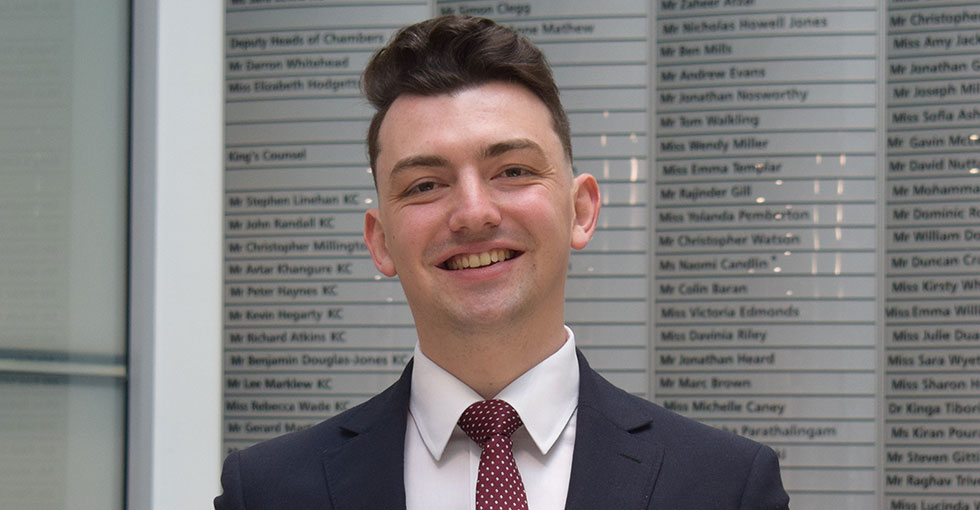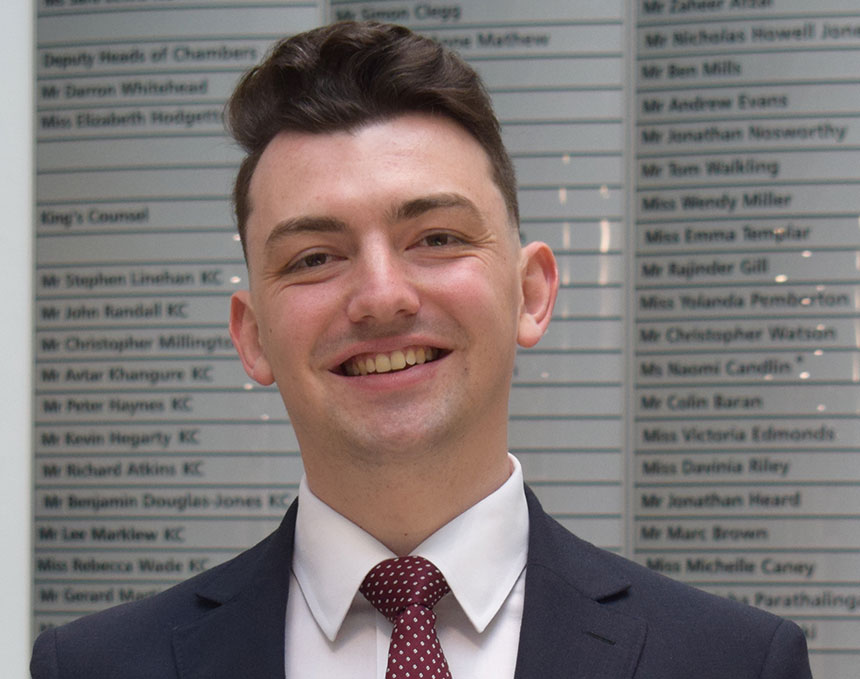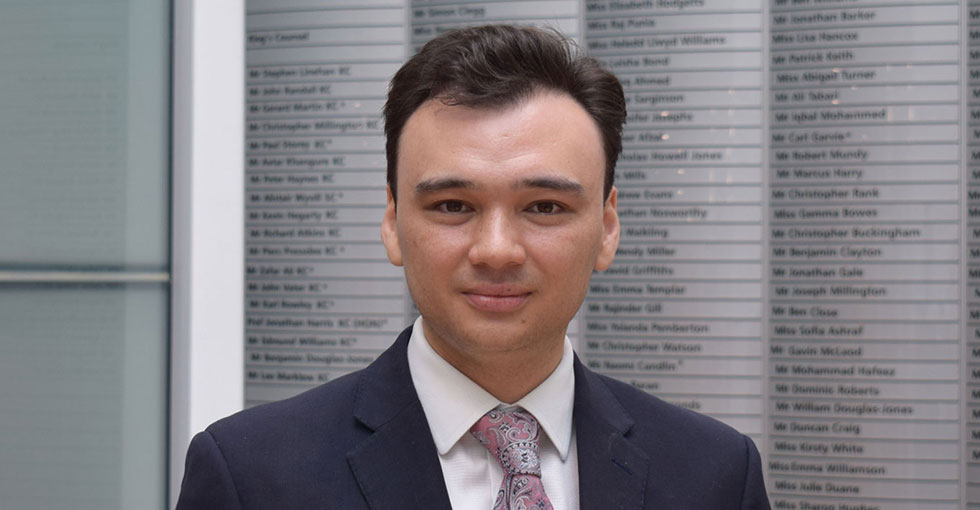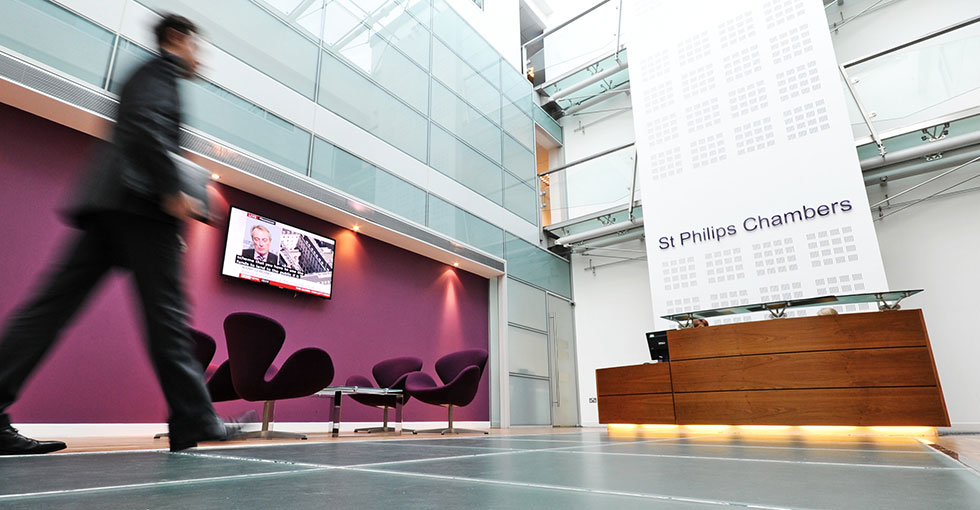Trust Issues: April 2025
For trustees pursuing or defending trust disputes, the question of costs will be a significant one. Although they benefit from an indemnity as against the beneficiaries for costs properly incurred, when faced with the prospect of litigation with third parties, a trustee would be well-advised to seek the court’s blessing that they are acting properly in the proposed action. Doing so permits the trustees to indemnify their costs in the action as against the beneficiaries and, so, recover those costs from the trust fund. This process is known as a Beddoe application.
The risks to trustees of failing to obtain Beddoe relief were set out by Lindley LJ in the eponymous case of Re Beddoe [1893] 1 Ch 547 at 557 (emphasis added):
[…] a trustee who, without the sanction of the Court, commences an action or defends an action unsuccessfully, does so at his own risk as regards the costs, even if he acts on counsel’s opinion; and when the trustee seeks to obtain such costs out of his trust estate, he ought not to be allowed to charge them against [the beneficiary] unless under very exceptional circumstances.
This article, the first in a series looking at common issues in trust litigation, will consider what a Beddoe application is, when one may be needed, and how these applications are made. This article will end with a checklist of practical points to bear in mind when considering a Beddoe application.
What is a Beddoe Application?
In general, trustees have a right to indemnity from trust assets for costs properly incurred in the execution of their duties (including in litigation with beneficiaries). The recovery of a trustee’s costs incurred in litigation with third parties requires that the trustee is acting properly in bringing or defending that action. In making a Beddoe application, the trustee is seeking the court’s direction whether or not to bring or defend, or to continue to bring or defend, the claim. The court’s order granting the application confirms that the trustee is acting properly in the action and, so, ensures that their costs may be met out of the trust assets. This includes costs which the trustees may be required to pay another party in proceedings.
It is important to bear in mind what the court is – and is not – doing when determining a Beddoe application. The function of Beddoe relief is to predetermine the issue of costs as between the trustee and beneficiaries. Namely, whether or not the trustee should be permitted to recover the costs of the main action from the trust assets as a properly incurred expense. That is not the same as determining the overall question of costs in the main claim as between the litigating parties. Accordingly, the familiar range of possible costs orders remain within the discretion of the judge hearing the main claim.
Given that a Beddoe application predetermines a discreet issue as between the trustee and beneficiaries, the application must be made by way of separate proceedings to the main claim. The consequence of a trustee obtaining Beddoe relief is that trust assets are put at risk. Therefore, when determining the application, the court will necessarily review the merits of the main claim. This assessment is conducted from the perspective of the trust, rather than either party within the main claim, to determine whether it is proper for the trustees to proceed.
When is a Beddoe Application required?
In general, a Beddoe application should be considered where trustees are pursuing or defending litigation with third parties on behalf of the trust. Lewin identifies five broad circumstances in which a Beddoe application may be appropriate (at [48-131]) (emphasis added):
(1) when a trustee becomes involved in a dispute with a third party where there is no risk of the trust fund being exhausted by the claim;
(2) when a trustee becomes involved in a dispute with a third party where the trustee is faced with a personal claim which is liable to exhaust the trust fund;
(3) when a trustee becomes involved in a dispute with a person who claims to be a beneficiary under the trust as to his rights (if any) under the terms of the trust;
(4) when a question arises whether a trustee should sue another trustee or a former trustee for breach of trust (or similar relief), but not when a question arises whether a trustee should defend a breach of trust action; and
(5) when a trustee becomes involved in proceedings against the trust or trust property.
Category (4) applies specifically to whether trustees should pursue, rather than defend, an action for breach of trust. The rationale being that, save for exceptional cases, a trustee found to be in breach of trust cannot be entitled to an indemnity from the trust fund for that breach. Therefore, the question of whether or not a trustee defending such a claim will be entitled to an indemnity for their costs can only be determined following determination of the main claim.
If a Beddoe application is appropriate, the next question is at what stage in proceedings an application should be made. Ideally, the application would precede commencement of proceedings brought by the trustee, or else be made as soon as proceedings are brought against them. However, this must be balanced against the cost involved in making the application; the main claim may initially appear to be straightforward and amenable to settlement. In those cases, the cost of the application may be disproportionate to the size of the fund or matters in issue (see, White Book 2025, at 64.2.3.2). This causes difficulty in assessing exactly when an application will be justified. The advice of Lewin is that, so long as an application is made promptly as soon as it appears that litigation in the main claim is likely to be complex, the court will likely be sympathetic to an application for past as well as future costs (at [48-154]).
Procedure
As with other trustee applications for directions from the court, Beddoe applications are governed by CPR Part 64 and associated Practice Directions (namely, 64B). As discussed above, a Beddoe application is necessarily made by way of separate proceedings to the main claim. The application is commenced by way of a Part 8 Claim Form (together with the applicant’s evidence and draft order) and, except in the case of settled land, proceeds under rule 64.2(a).
Pre-action steps and consultation with the beneficiaries
Although there is no specific pre-action protocol applicable to applications under Part 64, where an application is likely to be contested (as is usually the case in a Beddoe application), it is advisable to follow the Practice Direction on pre-action protocol (see, White Book 2025, at 64.3.1).
The most important pre-action step to be taken in a Beddoe application is consultation with the beneficiaries, which must be explained in the evidence submitted. The extent of that consultation, if any, depends upon the nature of the trust, as well as the number, age, and traceability, of the beneficiaries. Generally, in the case of a private trust, the trustees will be required to consult with identifiable adult trustees. Paragraph 7.7 of Practice Direction 64B gives the following guidance (emphasis added):
(1) If the trust is a private trust where the beneficiaries principally concerned are not numerous and are all or mainly adult, identified and traceable, the trustees will be expected to have canvassed with all the adult beneficiaries the proposed or possible courses of action before applying for directions.
(2) If it is a private trust with a larger number of beneficiaries, including those not yet born or identified, or children, it is likely that there will nevertheless be some adult beneficiaries principally concerned, with whom the trustees must consult.
(3) In relation to a charitable trust the trustees must have consulted the Attorney-General, through the Treasury Solicitor, as well as the Charity Commissioners whose consent to the application will have been needed under section 33 of the Charities Act 1993.
(4) In relation to a pension trust, unless the members are very few in number, no particular steps by way of consultation with beneficiaries (including, where relevant, employers) or their representatives are required in preparation for the application, though the trustees’ evidence should describe any consultation that has in fact taken place.
Where consultation reveals conflicting views amongst the beneficiaries, usually those views should each be put before the court. This is on the basis that the court may find the minority view to be in the best interests of the trust fund as a whole.
The Claim Form
The Claim Form must state that Part 8 applies, the question which the claimant wishes the court to decide, and (where the claimant acts in a representative capacity) what that capacity is (e.g. trustee). However, where the confidentiality of the order sought is important, the statement of remedy sought may be expressed in general terms. If this is the case, then the trustees must set out what is sought in their filed evidence (see, paragraph 2 of Practice Direction 64B). The example given in Practice Direction 64B of where this may be appropriate is where there is a risk that the opposing party in the main claim could access the Claim Form under CPR rule 5.4 and, so, find out the directions sought.
Parties
The first question when preparing the Claim Form will be which parties, if any, need to be included as defendants. Ordinarily, a Beddoe application will be made by trustees, given that they are the ones who will benefit from relief. In that case, it will usually be appropriate to join the beneficiaries to the claim as persons with an interest in the trust or in the order sought (see, rule 64.4(1)(c )). However, it may be unnecessary to join every beneficiary. For example, where there are only two views on the appropriate course of action, and one such view is advocated by a joined beneficiary, it may not be necessary to join further beneficiaries where the trustees are in a position to forward the other arguments (see, paragraph 4.1 of Practice Direction 64B).
In some cases, it may be appropriate for a trustee to consider issuing the Claim Form without naming defendants under rule 8.2A. To do so, a trustee must obtain permission before issuing the Claim Form (rule 8.2A(2)) and, in applying for permission, they must include a copy of the proposed Claim Form (rule 8.2A(3)(b)). Practice Direction 64B gives two examples of when this may be appropriate (see, paragraphs 4.2 and 4.3):
- First, where the court is in a position to assess what directions to give without having to hear from parties other than the trustee. For example, where there is agreement between the proposed parties.
- Second, where the trustees know that beneficiaries will need to be joined, but are unsure as to which (such as where the directions given may have varying effects on different classes of beneficiaries). In this case, the application for permission under rule 8.2A may be combined with an application for directions as to which parties to join or give notice to under rule 19.8A. However, Lewin advises that, where trustees are in no doubt as to some of the beneficiaries to be joined, but have doubts as to others, then the claim should properly be issued against the ‘known’ beneficiaries. Once issued, the trustees should seek directions as to whether or not to join the other beneficiaries (see, [48-145]).
Finally, although applications are usually brought by trustees, there is nothing in principle preventing a beneficiary from making an application. In that case, all trustees must be included as defendants (see, CPR r.64.4(1)(a)).
Evidence
The application should be supported by evidence in the form of a witness statement. That evidence must give full and frank disclosure of relevant matters (i.e. the weaknesses as well as strengths of their position in the main claim). This is the case even where beneficiaries participate as defendants. It should be noted that a failure to provide full and frank disclosure may invalidate the relief given by the order (see paragraph 7.1 of Practice Direction 64B). Matters to be covered in the evidence include:
The advice of an appropriately qualified lawyer as to the prospects of success in the main action. The lawyer’s qualifications should be stated. If the advice was given on formal instructions, those instructions should be put in evidence. If not, then the basis for the advice should be fully set out. “Appropriately qualified” means one whose qualifications and experience are appropriate to the circumstances of the case (see, paragraphs 7.2(1) and 7.3 of Practice Direction 64B).
- An estimate of (i) the value or significance of the trust to proceedings, (ii) the costs likely to be incurred by the trustees by reference to the stages of proceedings, and (iii) the costs of other parties which the trustees may be ordered to pay if unsuccessful (see, paragraph 7.2(2) of Practice Direction 64B).
- Any known facts as to the financial means of other parties in the proceedings (see, paragraph 7.2(3) of Practice Direction 64B).
- Any other factors relevant to the court’s decision whether to give the directions sought (see, paragraph 7.2(4) of Practice Direction 64B).
- Whether (i) the Practice Direction (Pre-Action Conduct) or any applicable Pre-Action Protocol has been complied with in the main claim, and (ii) whether the trustees have proposed or undertaken any form of ADR and, if not, why not (see, paragraph 7.5 of Practice Direction 64B).
- What, if any, consultation there has been with the beneficiaries and the result of that consultation (see, paragraph 7.7 of Practice Direction 64B).
- Whether there have been any without prejudice negotiations or settlement offers (including Part 36 Offers) between the parties (see, Lewin [48-147]).
- Where the applicant believes a hearing is necessary, the reasons why (see, paragraph 6.1 of Practice Direction 64B).
Procedure where a beneficiary is a party in the main action
Where a beneficiary is a party opposed to the trustee in the main action, they will need to be joined as a defendant to the application. However, special care needs to be taken to avoid the disclosure of evidence which would be privileged in the main claim. Where there is such evidence, it should be included as a confidential exhibit to the trustee’s evidence which is not served on the opposing beneficiary. It follows that the opposing beneficiary may be excluded from the hearing when that evidence is discussed (see, paragraph 7.6 of Practice Direction 64B). In addition, the opposing beneficiary and their counsel will usually be excluded from the hearing when submissions are made as to the merits of the main claim (see, Lewin [48-150]). The reason for these measures is to prevent the opposing beneficiary being privy to discussion of the strengths and weaknesses of the trustees’ position.
Proceeding in Private
Proceedings will be listed in private in the first instance and, therefore, will usually also be heard in private. In that case, any order made or documents on the court record will not be open to inspection. Where the application is determined without a hearing, the order will be expressed as having been made in private.
The Judge hearing the Application
The application will usually be heard by a High Court Judge. A Master or District Judge may also deal with Beddoe applications albeit only in plain cases (see, paragraph 7.11 of Practice Direction 64B). Furthermore, a District Judge may only hear an application with the consent of their Supervising Judge (see, White Book 2025, at 64.2.3).
Proceeding with or without a hearing
The court will dispose of the application without a hearing if it considers (a) that doing so will save time or expense, and (b) that a hearing is not necessary (see paragraph 6.1 of Practice Direction 64B). Therefore, it is incumbent on applicant trustees to explain in their witness evidence why they believe a hearing to be necessary. Equally, where a defendant to the application believes a hearing to be necessary, and that this is not sufficiently addressed in the trustee’s evidence, they should explain this within their evidence. The point to note is that a hearing will not necessarily happen as a matter of course; if a party wishes the application to be disposed of by way of a hearing, it is best to address the point clearly in witness evidence.
Order
Where an application is granted, the court will either permit the trustee to pursue or defend proceedings up until judgment, or else grant relief in relation to a given stage in proceedings. For example, the trustee may be permitted to pursue a claim up to disclosure or exchange of evidence before being required to make a further application. Where the court orders that an application be renewed following disclosure, and the trustee is required to show disclosed documents to the court as part of that renewed application, it may be necessary for the trustee to obtain the permission of the court in the main claim (see, paragraph 7.8(1) of Practice Direction 64B).
Where an application is dismissed, the trustee will be unable to indemnify their costs against the trust fund. However, they will generally remain free to proceed in the litigation, either at their own cost or else through some other means of litigation funding. For example, by way of personal indemnification from one or more of the beneficiaries. Nevertheless, in the absence of the indemnity that Beddoe relief grants, trustees’ legal advisers should be prepared to take stock and consider with the client whether the cost of litigation is justified.
Costs
As with other applications by the trustee for directions, the general rule is that the parties’ costs of a Beddoe application will be paid out of the trust fund. The main exception to this rule is where there has been improper conduct by one of the parties (for example where a party has improperly raised or pursued a given issue).
Checklist
When considering a Beddoe application, the following checklist contains some useful points to consider:
Review CPR Part 64 and Practice Direction 64B before making an application.
- Consider if the main dispute falls within one of the general categories for which a Beddoe application is appropriate.
- Consider at what stage of litigation an application should be made – it is a matter of professional judgement whether the cost of the application is justified.
- Consider whether pre-action protocol steps are required.
- Consult with (at least) all identifiable adult beneficiaries and note their views as to the application.
- A Beddoe application must be made by way of separate proceedings to the main claim via a Part 8 Claim Form.
- Consider which parties will need to be added as defendants (generally, the beneficiaries).
- Prepare evidence in the form of witness statements covering: (a) The advice of an appropriately qualified lawyer as to prospects of success, (b) Costs estimates, (c ) the financial means of other parties in the main claim, (d) facts relevant to the court’s decision, (e) pre-action conduct, (f) proposals for ADR, (g) details of any consultation with the beneficiaries, (h) settlement offers, (i) the reasons why a hearing is necessary (if relevant).
- An applicant’s evidence must make full and frank disclosure – failure to comply can invalidate the protection offered by a Beddoe application.
- Take special care where a beneficiary is an opposing party in the main claim, both in relation to confidentiality of the evidence and possibly the procedure of a hearing.
- Do not assume that there will be a hearing as a matter of course – if your client believes a hearing is necessary, this should be clearly explained in their evidence.
- Remember an Order for relief may relate to the whole claim or to specific steps within the litigation process.
- Costs of the application will generally be paid out of the trust fund.
If you would like to download a pdf version of this article, please click here.
Whilst every effort has been taken to ensure that the law in this article is correct, it is intended to give a general overview of the law for educational and/or informational purposes. It is not intended to be a substitute for specific legal advice and should not be relied upon for this purpose.
This article represents the opinion of the author and does not necessarily reflect the view of any other member of St Philips Chambers.










